The Venus Quest: The End of a long Journey. Brought to you by Lithic Literature.

The Venus Quest: The End of a long Journey.
Brought to you by Lithic Literature.
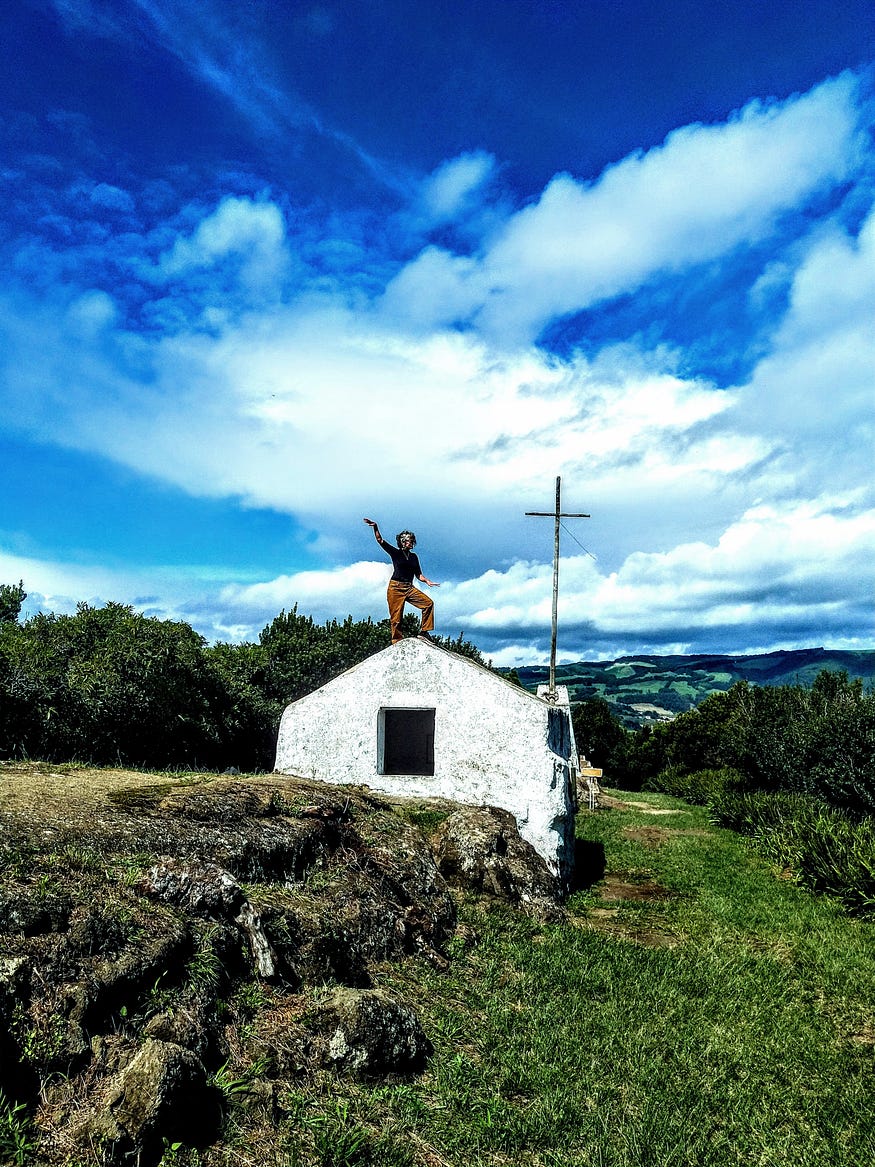
I was with Maria Brito, who brought me to the top of Mt. Brazil as I tried to share why I had come to the Azores. I am from the state of Maine on the other side of the Atlantic. In Maine, I picked up a pattern etched everywhere on the surface of old stones. It is far more than a logogram, I am calling it Lithic Literature. It works as a pre-curser to Asian character writing. Among the many layers of the material, a maiden using giant flying raptors to get around was very consistent. I have covered her life and times in previous articles. I have been able to follow her through the design presented in the stones. It is in this context that I have identified her. Initially, I referred to her as the Raptor Maiden due to her abilities to work and train large flying raptors for flight. During our meeting, Maria reminded me that Azores means raptor. Brito was very patient taking this picture as I described one of the poses that Raptor Maiden uses as a starting position when taking off with her raptor. It was my ignorance that did not allow me to identify the Venus of Galgenburg at this time. It was when I was researching the large pregnant Venus forms that the Raptor Maiden made her debut in my mind as the Venus of Galgenberg.
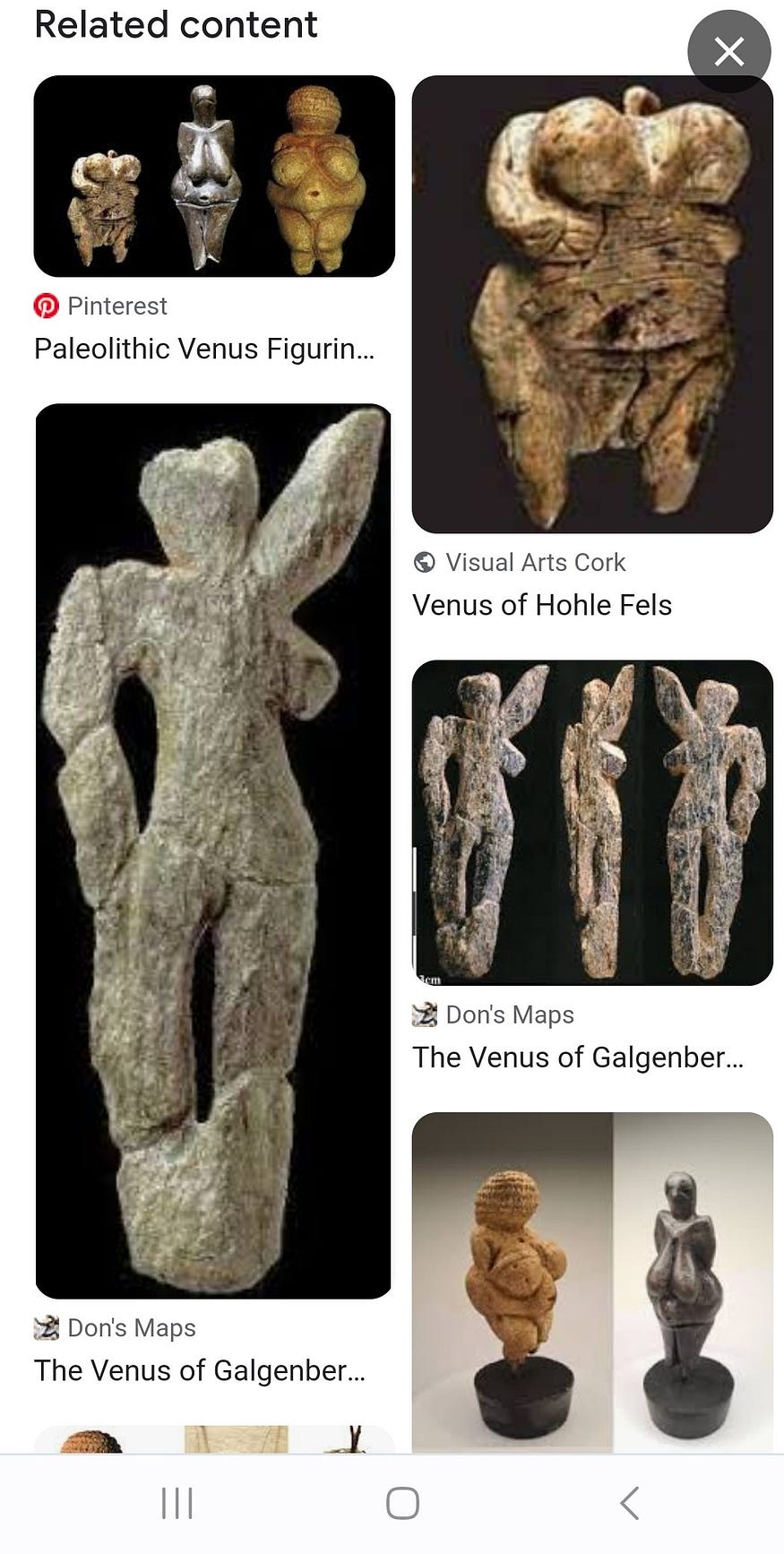
I have covered the massive megalithic monument on the granite bedrock cropping over looking the Atlantic coast of Maine pictured below in a previous article.
I have highlighted the maiden’s form in light pink sitting on a tree limb above the giant human’s shoulder on the right of the center of the image below. I have described this character as a tree hugging agile female adolescent surrounded by giant squawking raptors. She is often found trying to put the squawking to a stop. she is associated with collecting honey and eggs. If her extended arms are not wrestling with her bird, they are reaching for eggs with one arm and collecting honey with the other,

Sometimes, it takes a little time to pick up all the dots. I feel silly I did not see it sooner. It is better late than never. It is the posture of the legs that allowed me to identify the pattern. She is consistently surrounded by large birds. The artist portrays her using foreshortening to suggest the viewer is looking up at the raptor maiden. The maiden can be spotted up in the tall trees or up in the crows nest of early boat designs. After spending time with the Venus of Galgenberg , I became convinced she is our raptor maiden. In the link below is another article that gives more background on The Raptor Maiden and her other activities.
Okay🥰, I’m taking a moment to reflect on reality. I am getting to a point 👉 that I have been working towards. Presenting this material to you to demonstrates how and why it is here is a big effort and it can get a little messy. There are common reactions to seeing this material. We, as humans, have forgotten our history, and it is not due to the lack of effort of our ancestors. For whatever reasons; power, greed, shame, or cover-up, are some that come to mind, and the ancient humans have been gaslit. I am trying to correct that.
By illuminating lithic literature as an intended effort by ancient humans to record human history we remove the veil of pareidolia. Between the shackles of the Clovis first theory and the misconception of pareidolia, Lithic Literature went down as the Tower of Babble. Many times, when seeing this material for the first time, a lot of folks will qualify the experience as, " I can see the design, but I know it is only pareidolia." Well, I am here to demonstrate that it is not necessarily all in your head. Humans in the past were smart, intellectual, and eager to document their knowledge as we do today. I believe that the pictorial communications by our ancestors began with the first humans. We can think of the tower of babble as the monument of accumulation of all these pictorial documents. Over time, bottleneck events such as power struggles and oppression created gaps have distorted the human memory. Humans have rediscovered themselves in the stones repeatedly. With each rediscovery there came new interpretations and opportunities. I believe we have a great opportunity to rediscover ourselves again. I believe rediscovery of ourselves may be just what we need. 🥰
I spent a lot of time looking at the Venus of Galgenberg dated at 30,000 BC. Please take the time to explore my highlights. The large birds flapping wings and settling around the nest that we have been noting as a pattern associated with the raptor maiden can be enjoyed in the grouping below on the right.
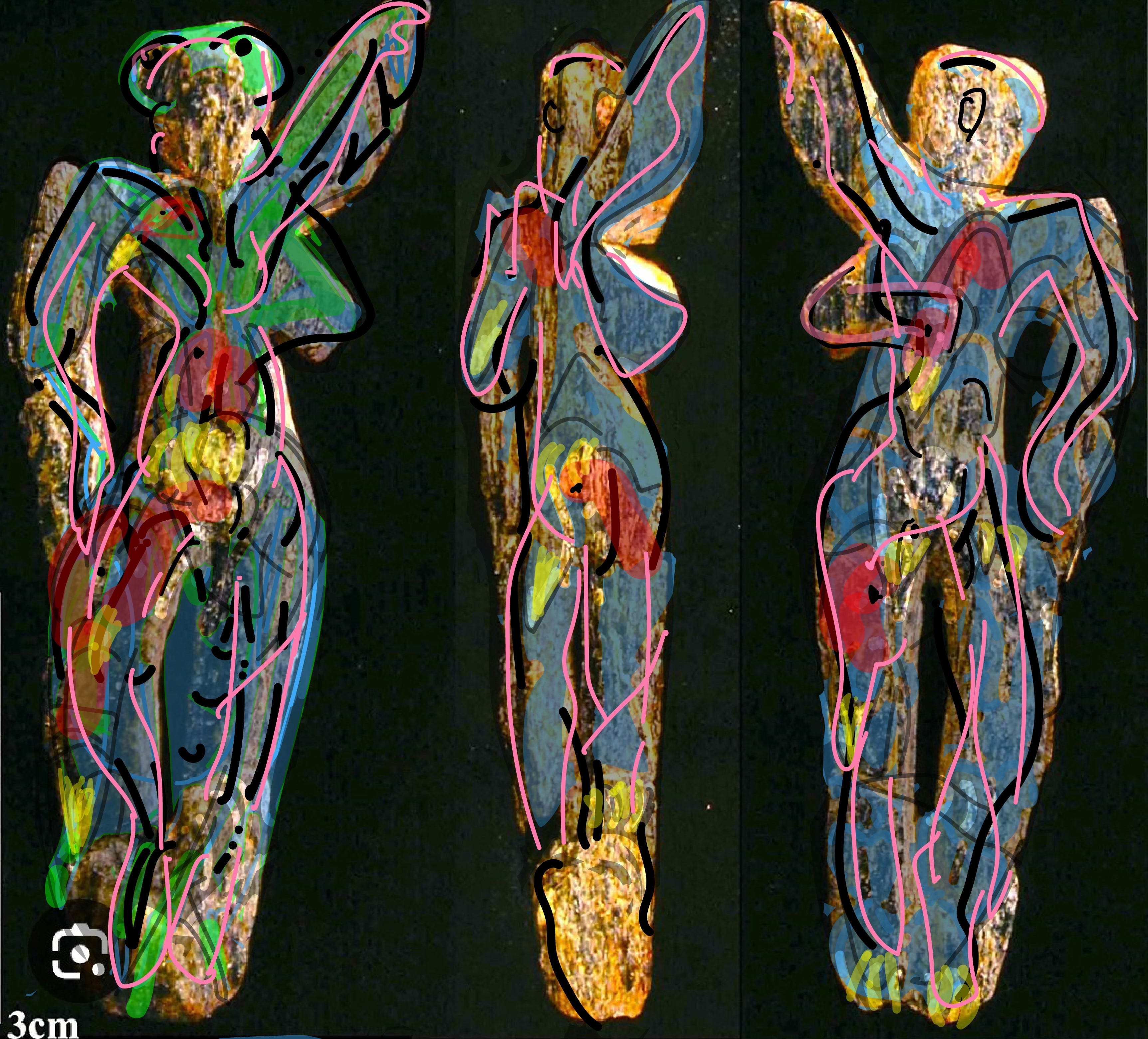
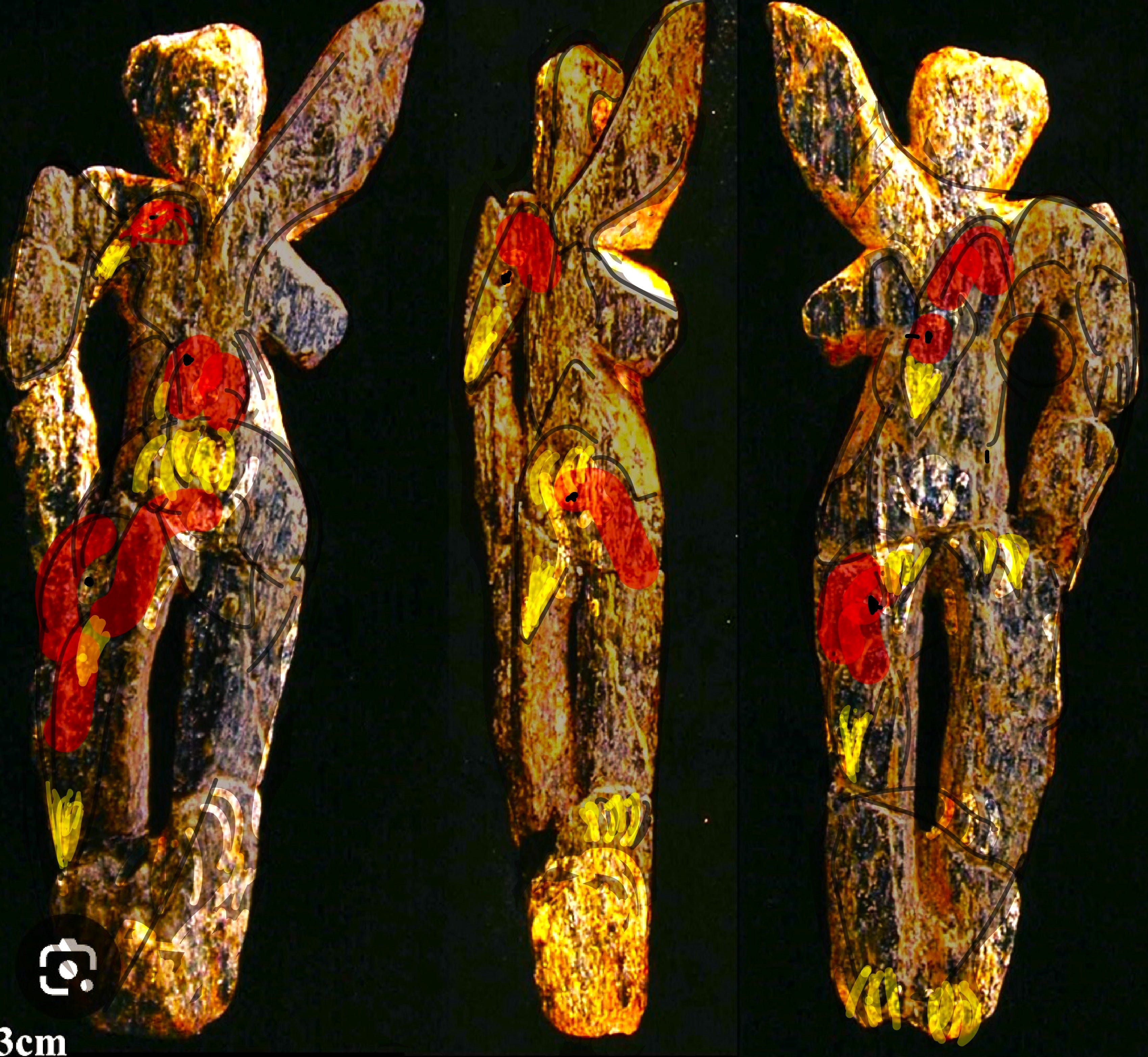
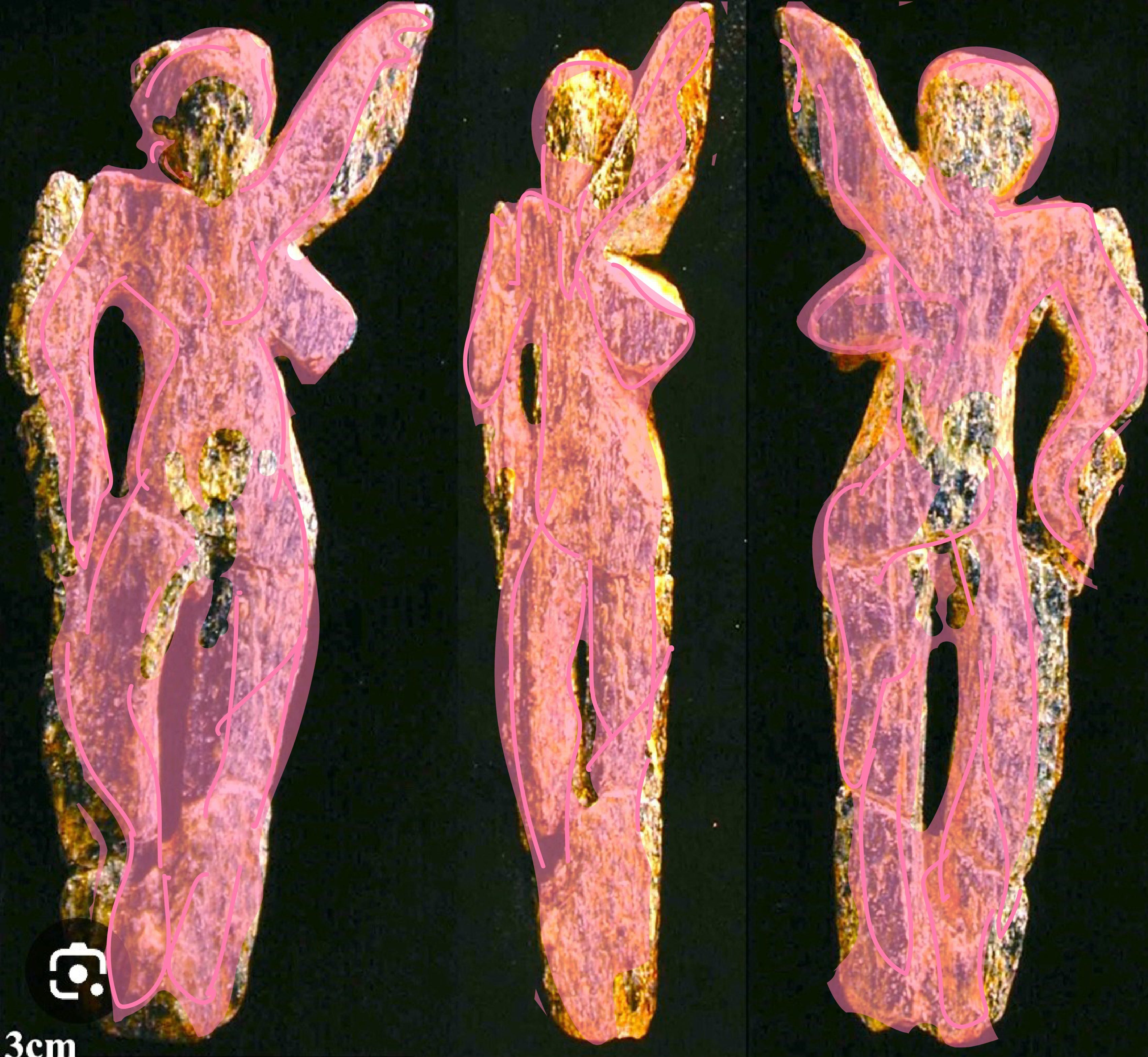
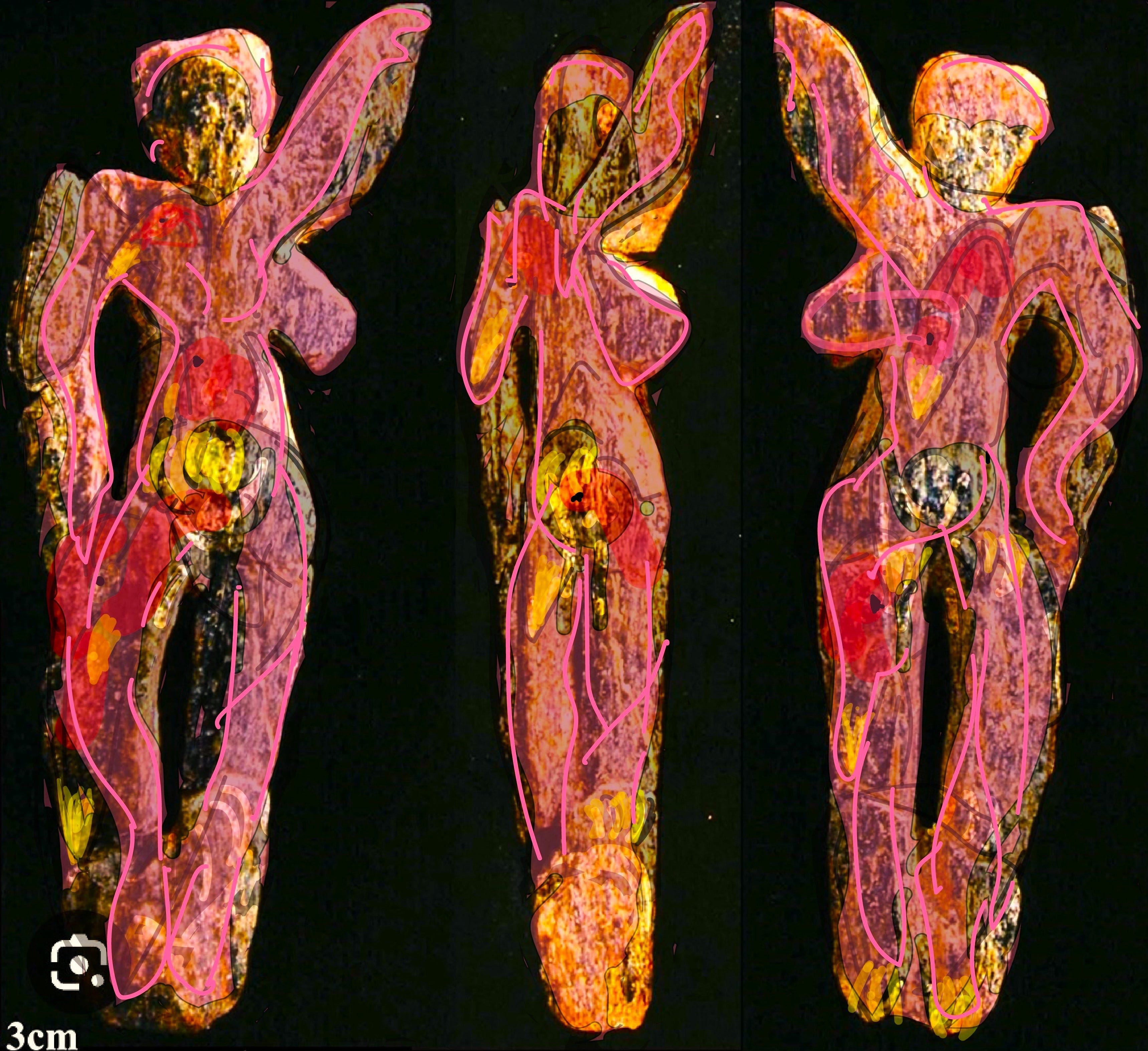
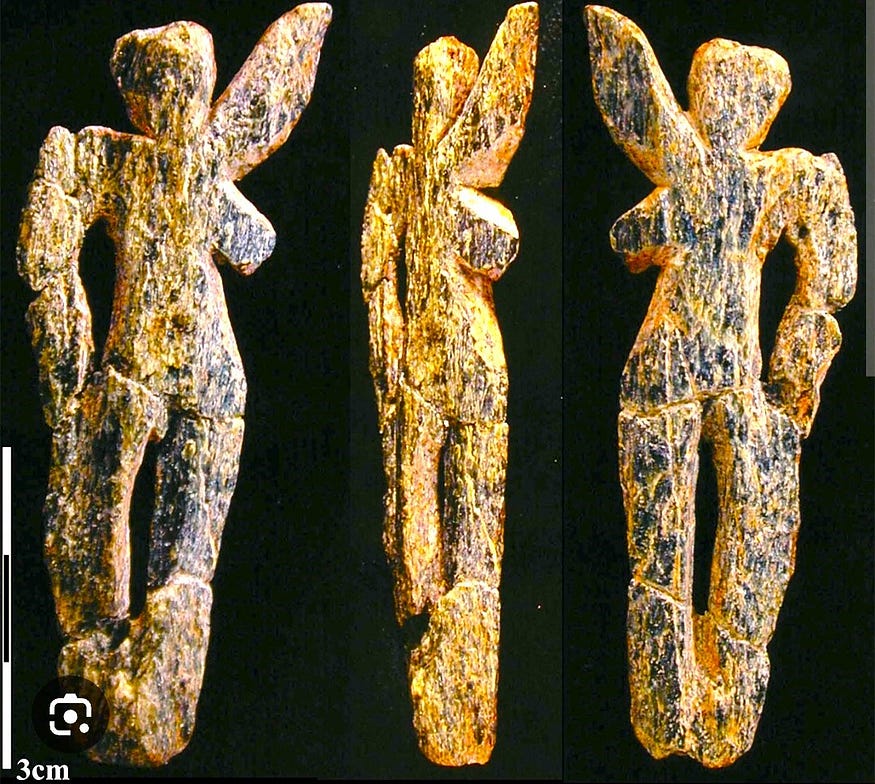
The brain loves to look for patterns, and when it picks up a good match it gets happy. That little splash of endorphins that come with each new discovery is an experience everyone has access to; all you need is a garden stone. Sitting with this material in front of me, my brain stepped up and handed me Botticelli’s la Primavera. The parading characters all started to look familiar. My brain was humming with delight. Please note the posture and placement of each figure. The figures are cookie cut from the ancient renderings provided by Lithic Literature that were distilled, and glamorized to make the message palatable to the times. I am speaking of powerful material. The type of material that can create religion and change it. The design used by the ancient folks is as old as the human being. As we make our way through numerous bottlenecks, our memory of the past gets hazy as we as a species get distracted by survival. Over time, we rediscover ourselves and our memories, allowing for a re-emergence of Lithic Literature. How we use this powerful information can have some strong effects. Botticelli’s cast of characters has the same cast of characters as in the design we are looking at today. Starting with the far right, whether you are thinking of Venus or Persephone or Eve, the story characters can stay in costume to perform in the next era. Okay, there may be some alterations, but they can be easily done with a good set/costume designer. I suggest that if you look past all the extra dressing, the cast of the Scorpion Goddess and the Dragon King can join the list of roles. The posture of egg and honey collecting has been cut and pasted. The tendency to want to parade documentation visually is continued by Botticelli as he depicted an enormous amount of plant life in his depiction of the coming of spring.
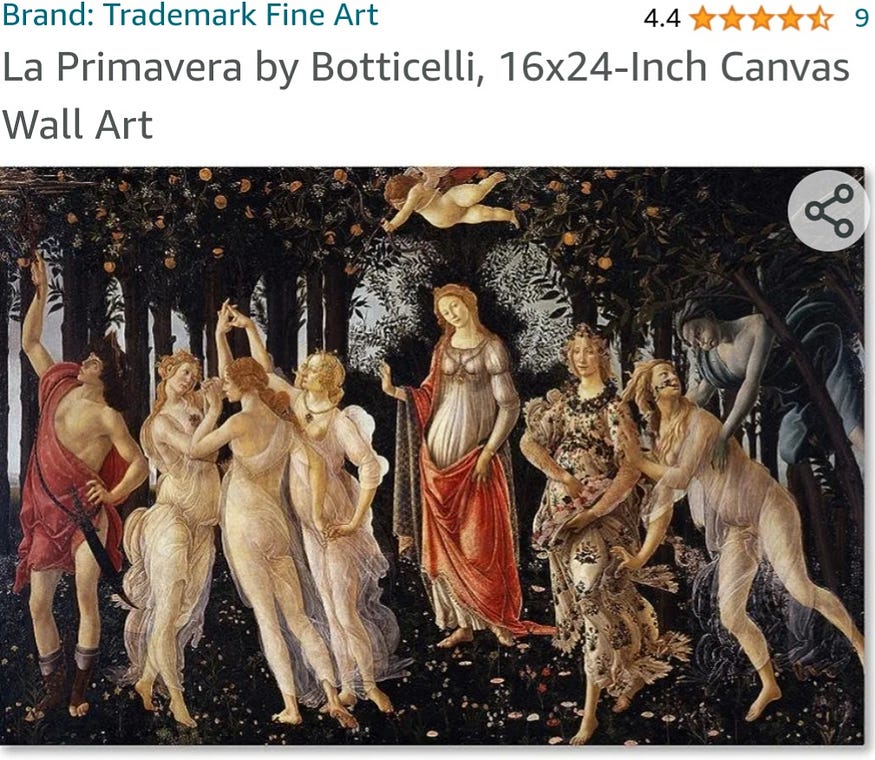
Now that our brain is stimulated to look for a pattern it is on it like a hound on scent. I was provide be an image of a clay figure found on Terceira Island. The fact that it is clay handled by humans should be enough to warrant an effort to date artifact by technicians. I can do my part and decipher the design.

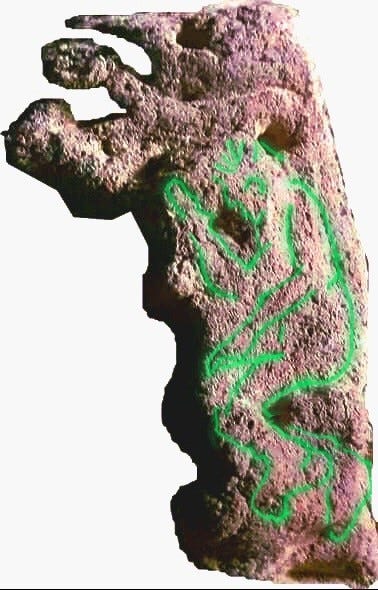
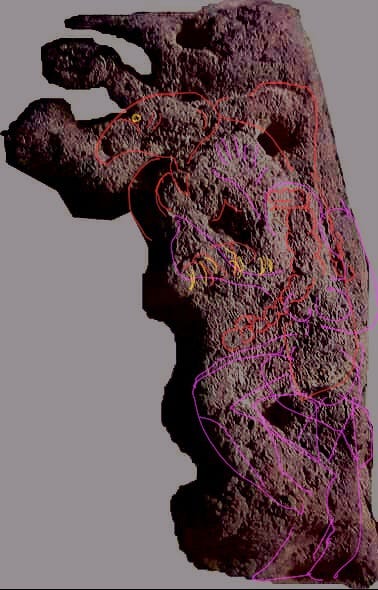

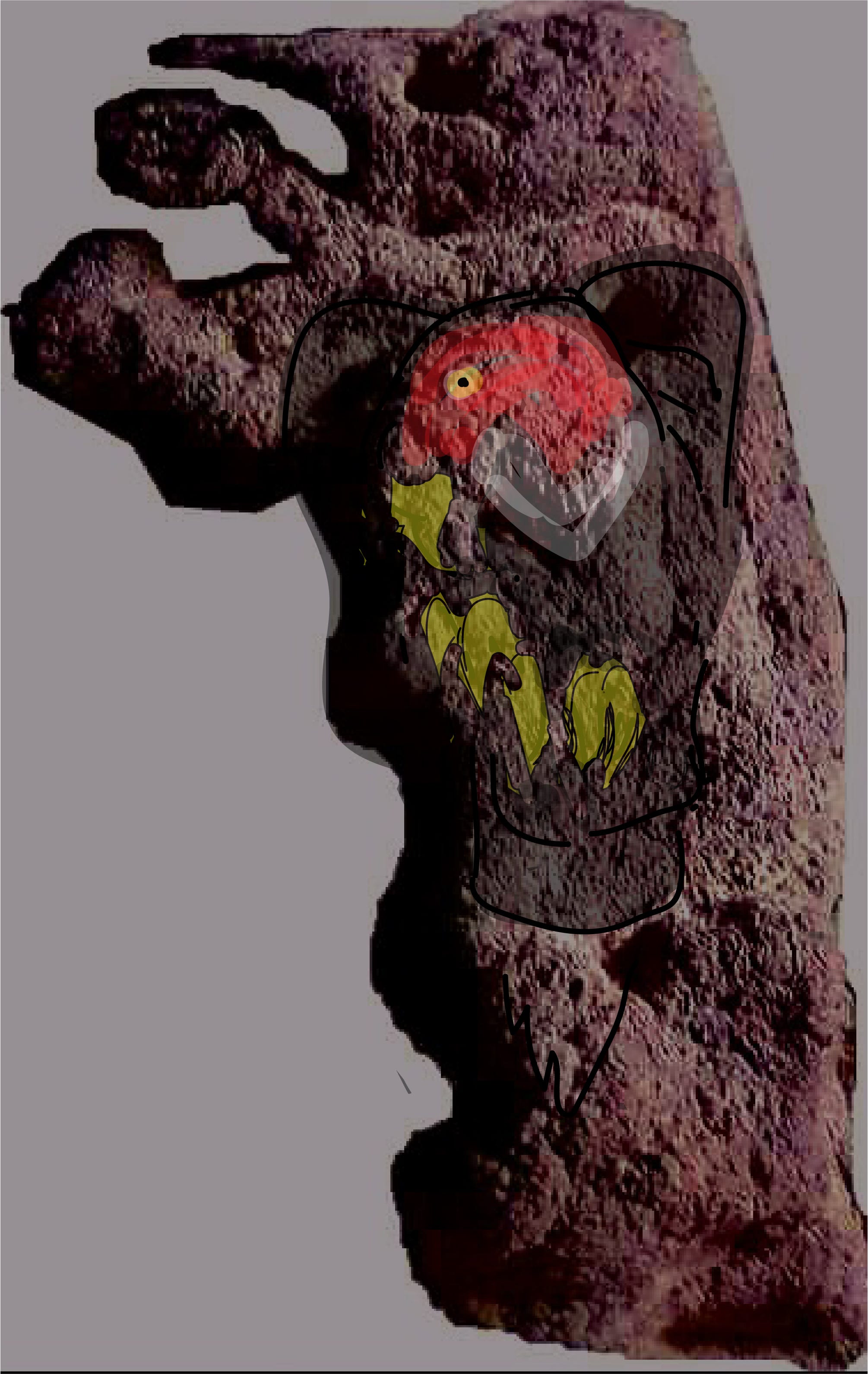
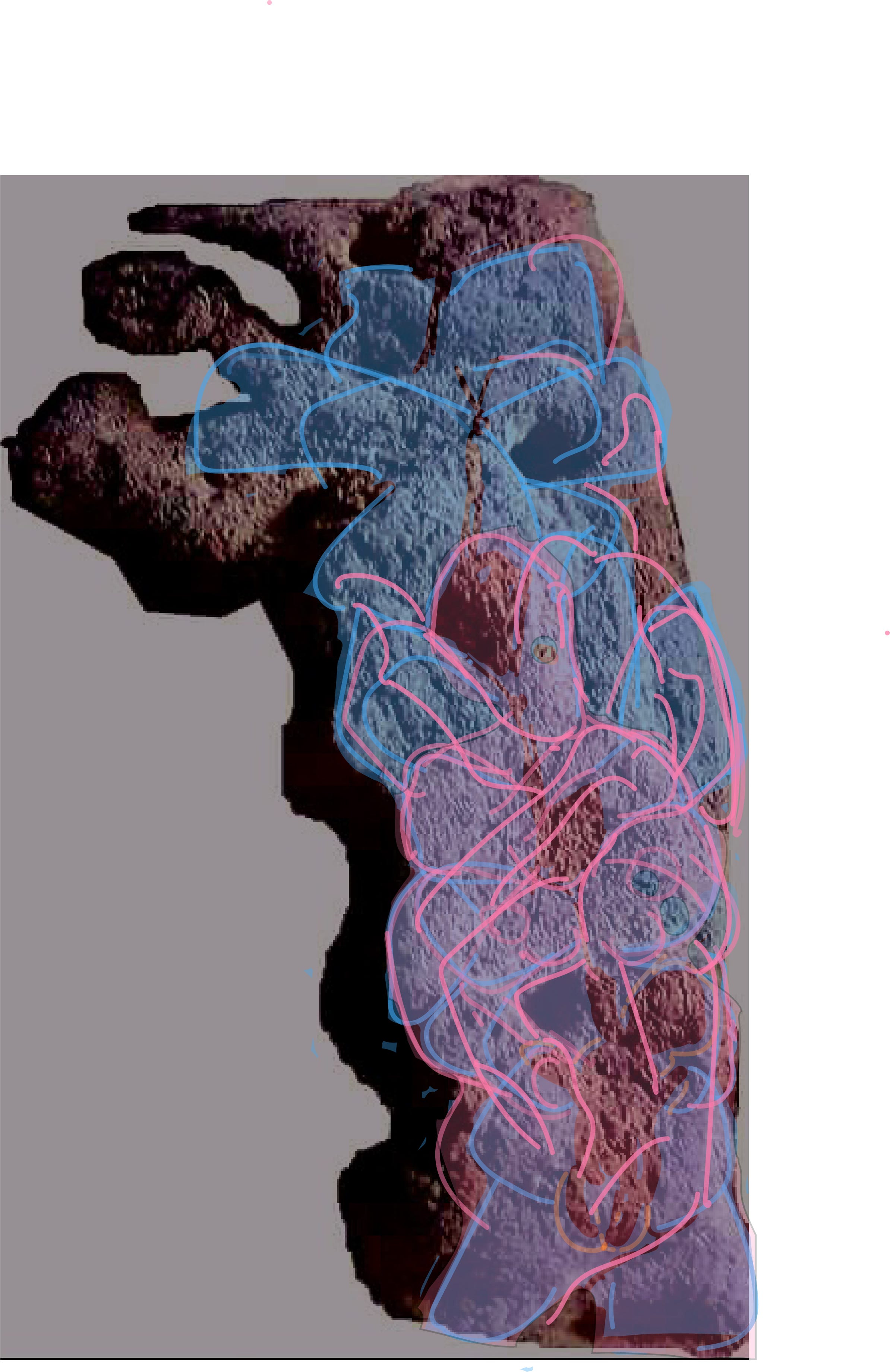
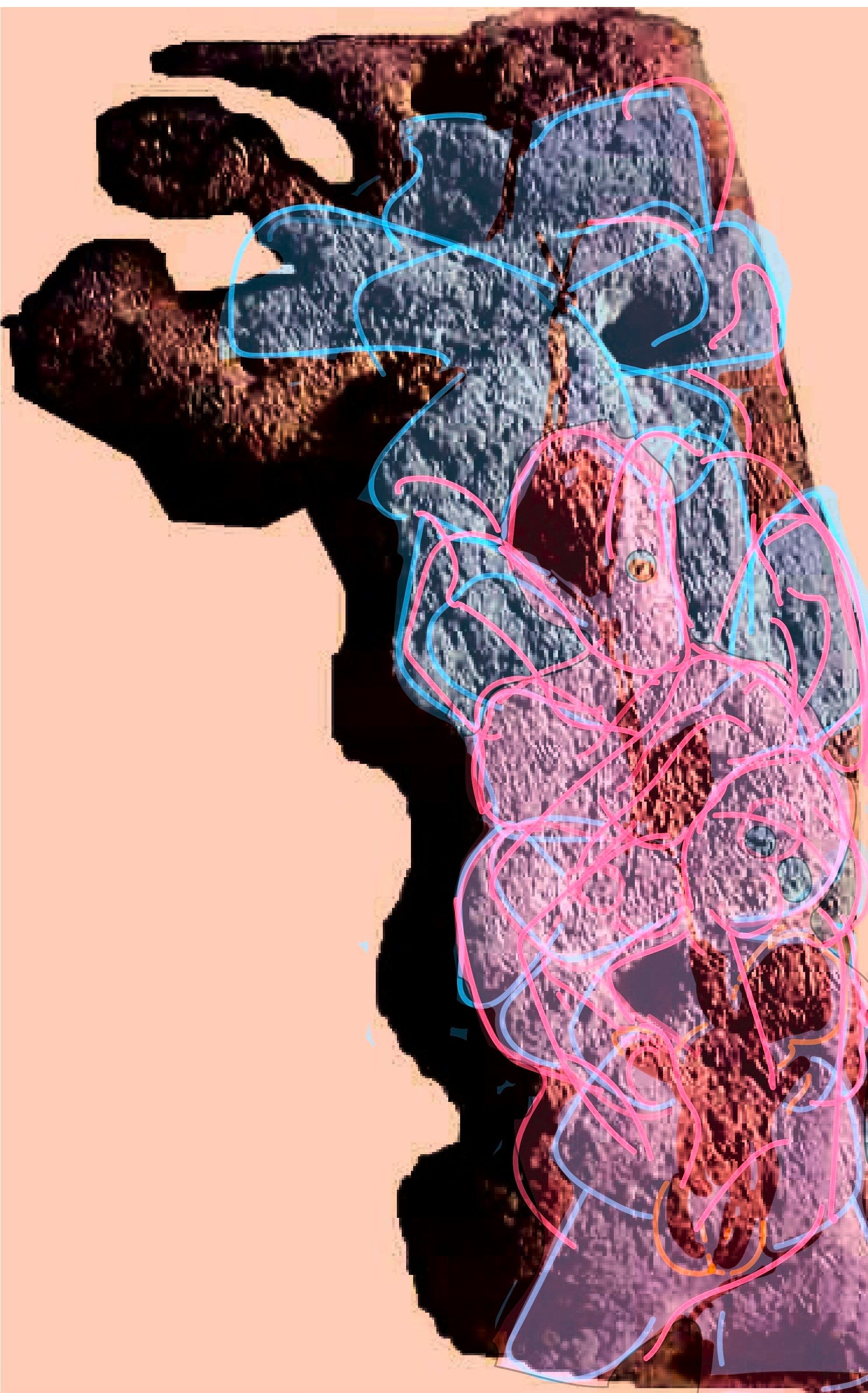
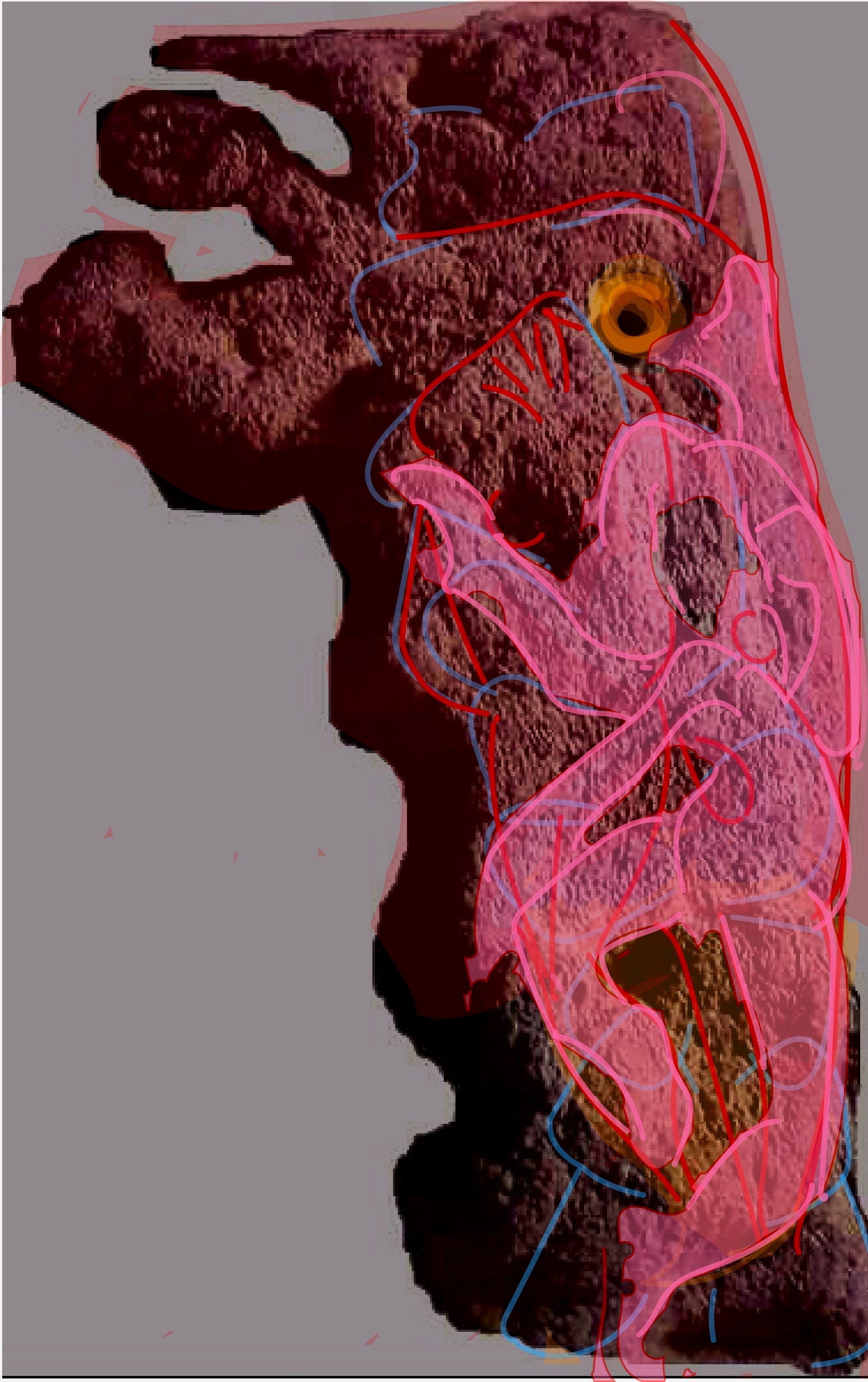
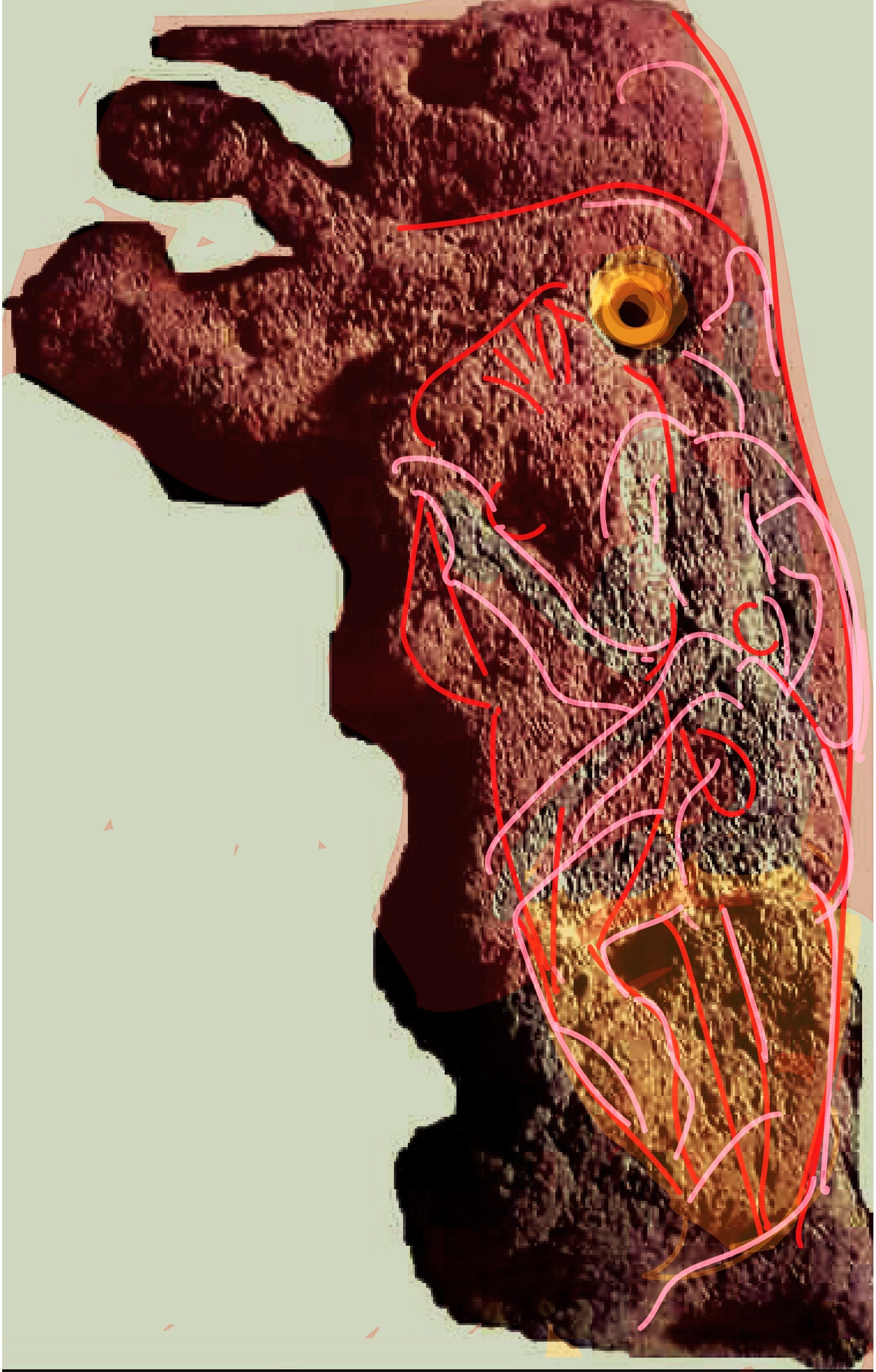
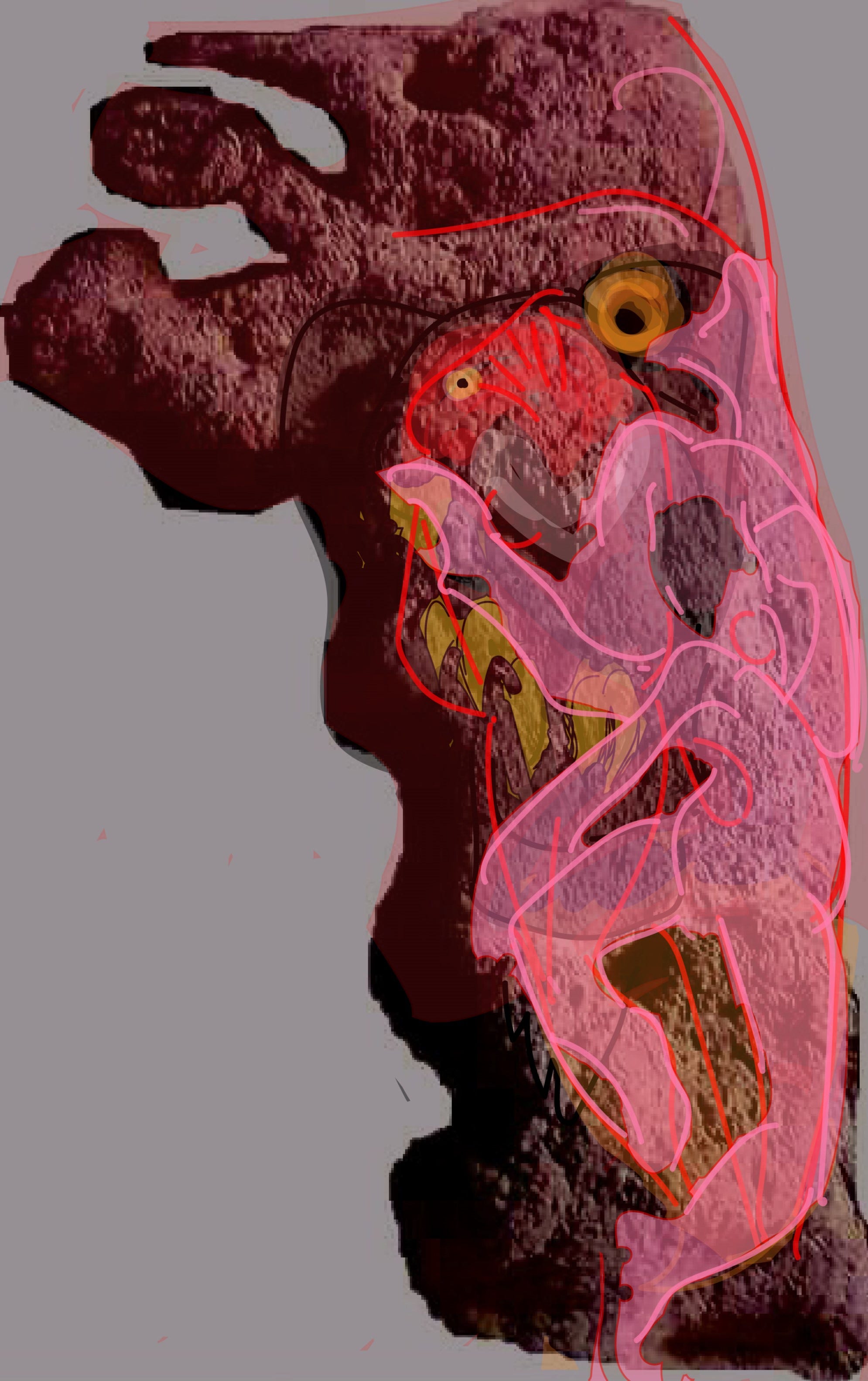
I am thrilled to find this beautiful raptor maiden on the clay figurine. She wrestles with her large birds as she tries to control their incessant squawk. The pattern of multiple layers is present when you notice that there are many presentations of the raptor maiden. If you are feeling adventurous watch as the maiden gets smaller, the bird gets larger.
The tentacles of lithic literature reach far back in the human brain as more patterns repeat themselves on ancient work. Below I have included a quick study of a stone figure from the Gobekli Tepe. I relish the moment when the female form appears. I have been told that there are no female forms depicted anywhere on the site. Well, with a little gust of endorphins we now know that not to be true. We can spot the female and bird forms below. I have also made an observation over time that seems to be falling into a pattern. I have observed protective gear for collecting honey. At first I had to giggle how it looked like an astronaut, but then I realized that the figure was pointing to the bees and then the helmet shape supporting the screen made more sense.
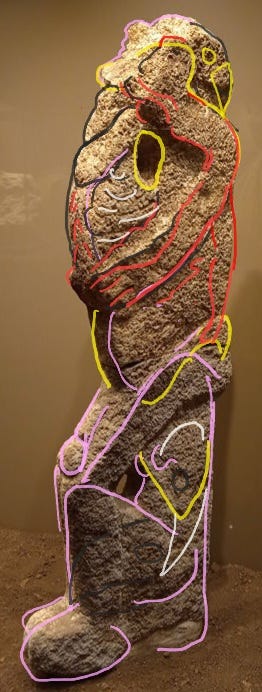

Here in Maine there are crumbs left by the Dorset folk and those who came before them. There is little study covering these early folks. Below I did find an ivory artifact that falls neatly in to our pattern of the Raptor Maiden.

I have grouped our flying raptor maidens below as a reminder of how similar and yet how different they are. Makes me think of an article about Vogue magazine through the ages. While they are hanging around together, it is a super time to talk about similar patterns that repeat throughout all four figures. I can find the female wearing protective headgear in all four. I can note a bee/scorpion capping all four designs and can be read as a hairstyle on maiden. Braids are often included in her many hair styles. The braids can also be seen as snakes as they infest the design. Although she starts as an adolescent she shows how she handles her pregnancy. All her activities appear to take place up in the tree. You can spot her offspring strapped to her back happily hanging on to her long braids behind her.

The Ivory figurine attributed to the Dorset folk is highlighted below. I have recently started my Venus searches by centering the butterfly form in blue as you see in the center. I have highlighted the flying tree hugger in red on the far left. On the far right I have highlighted the bird forms in black/red/ yellow , and the female in pink. Please enjoy.
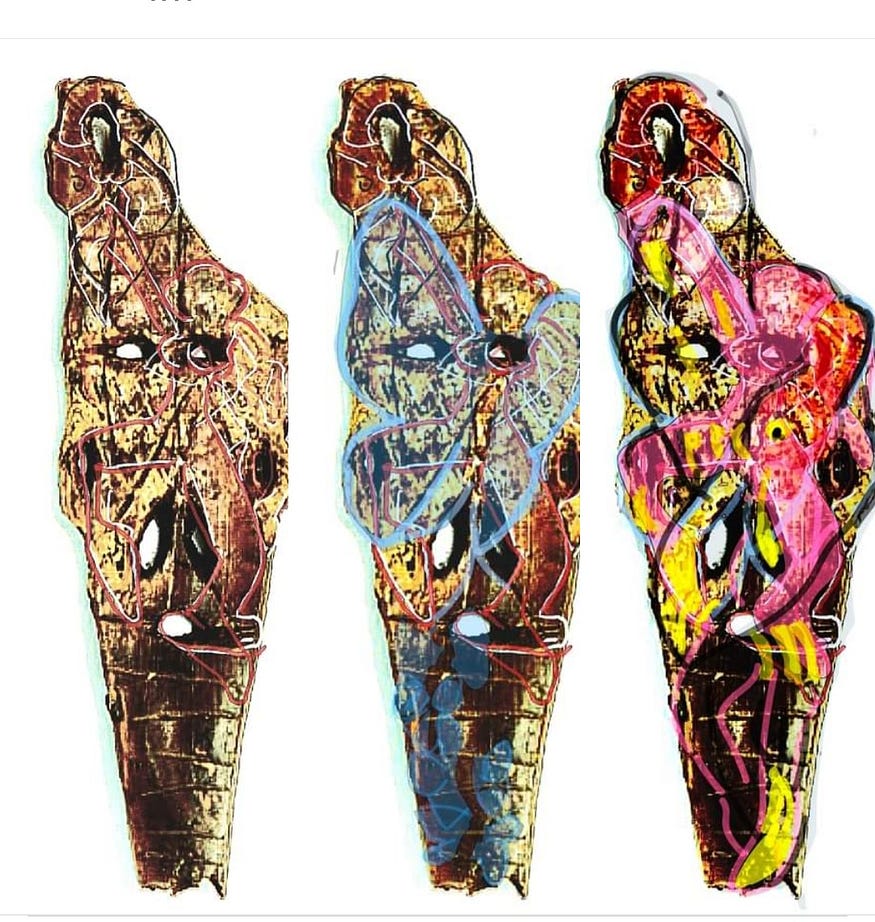
I have had a tremendous time getting here. I assure you it has not been easy. I may make this highlighting look easy, but it is an effort. The writing can only improve, and I hope it has. I never thought I would end up writing a blog, but with todays archeological discoveries flying off the shelf, it works wonderfully for sharing information in a crowded field. So thank you, Samsung, for your galaxy note and the internet for helping document and share this amazing early human invention we are calling Lithic Literature. I can not believe a year has gone by since my last venture to the Azores, but here we go again. With my flying raptor maiden mystery solved, I will be working on night scenes. Until then, I will start compiling the Venus to a book form and maybe garner some funds to support this research. Thanks again. Don’t stop looking.🥰
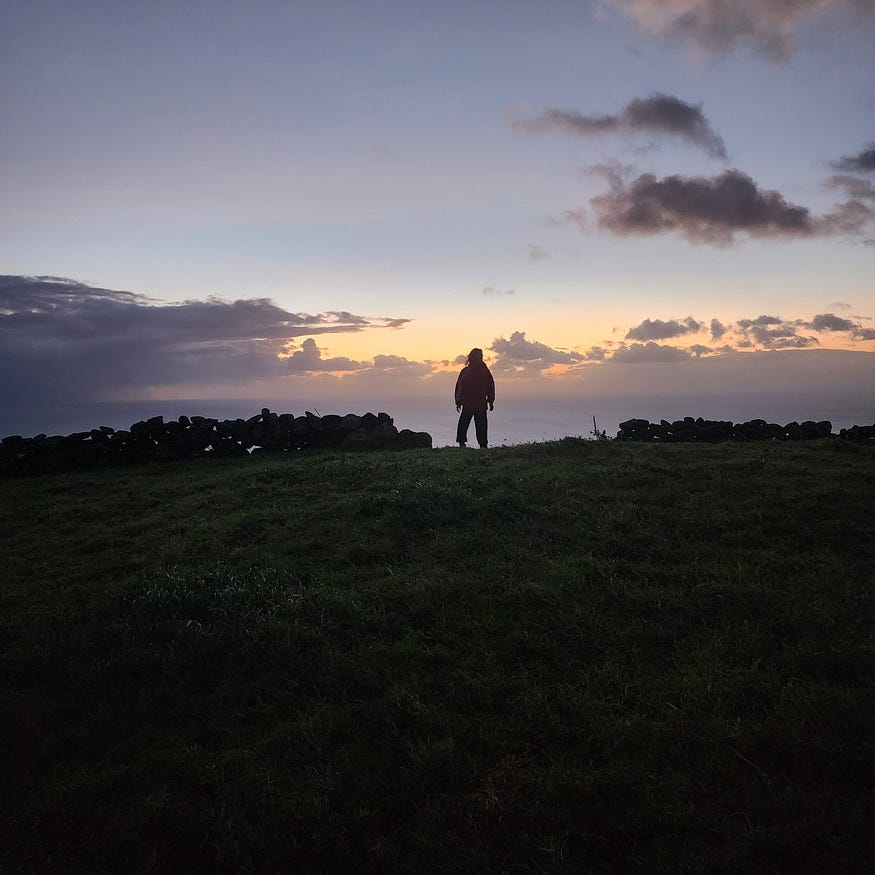


Comments
Post a Comment